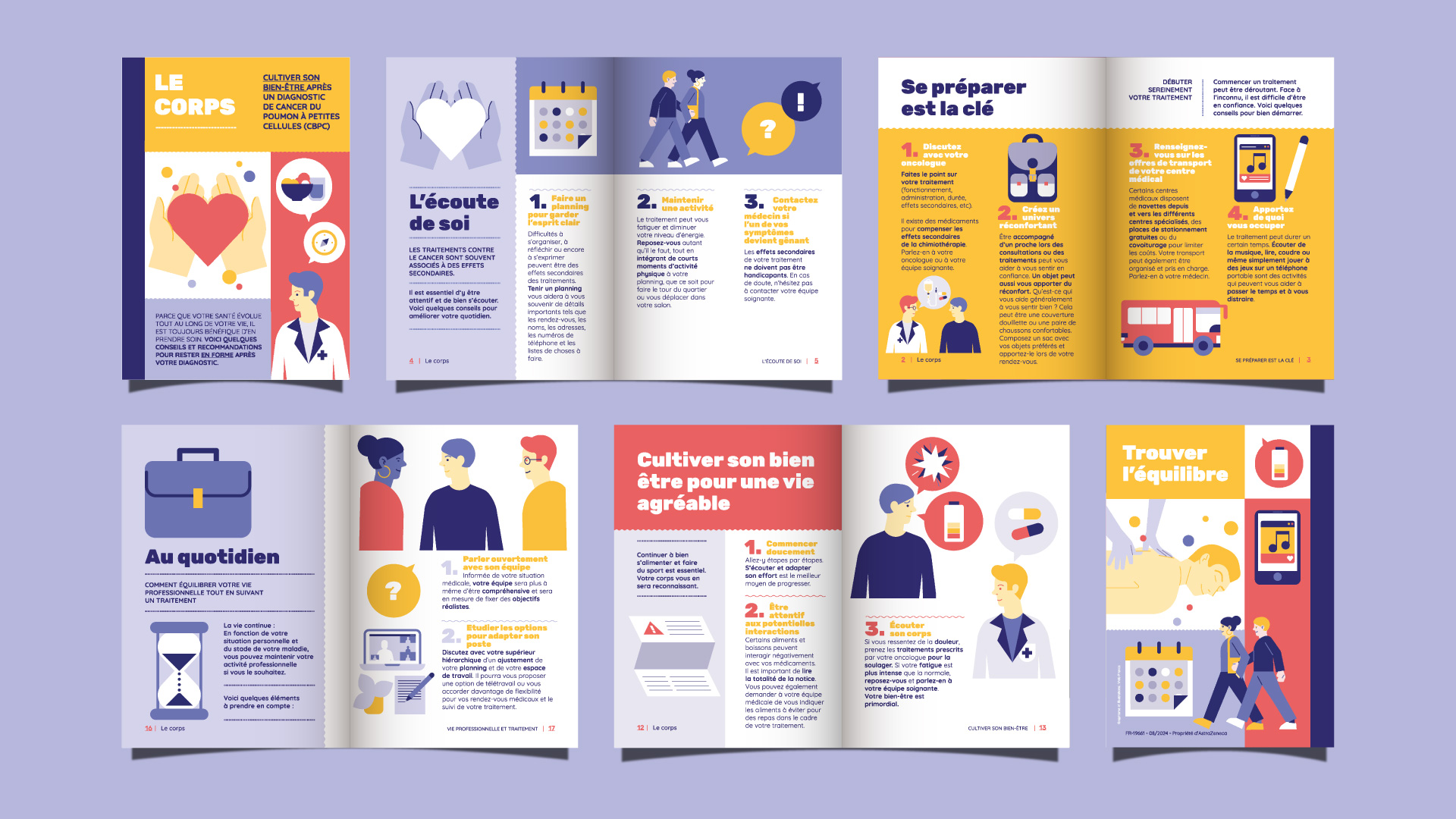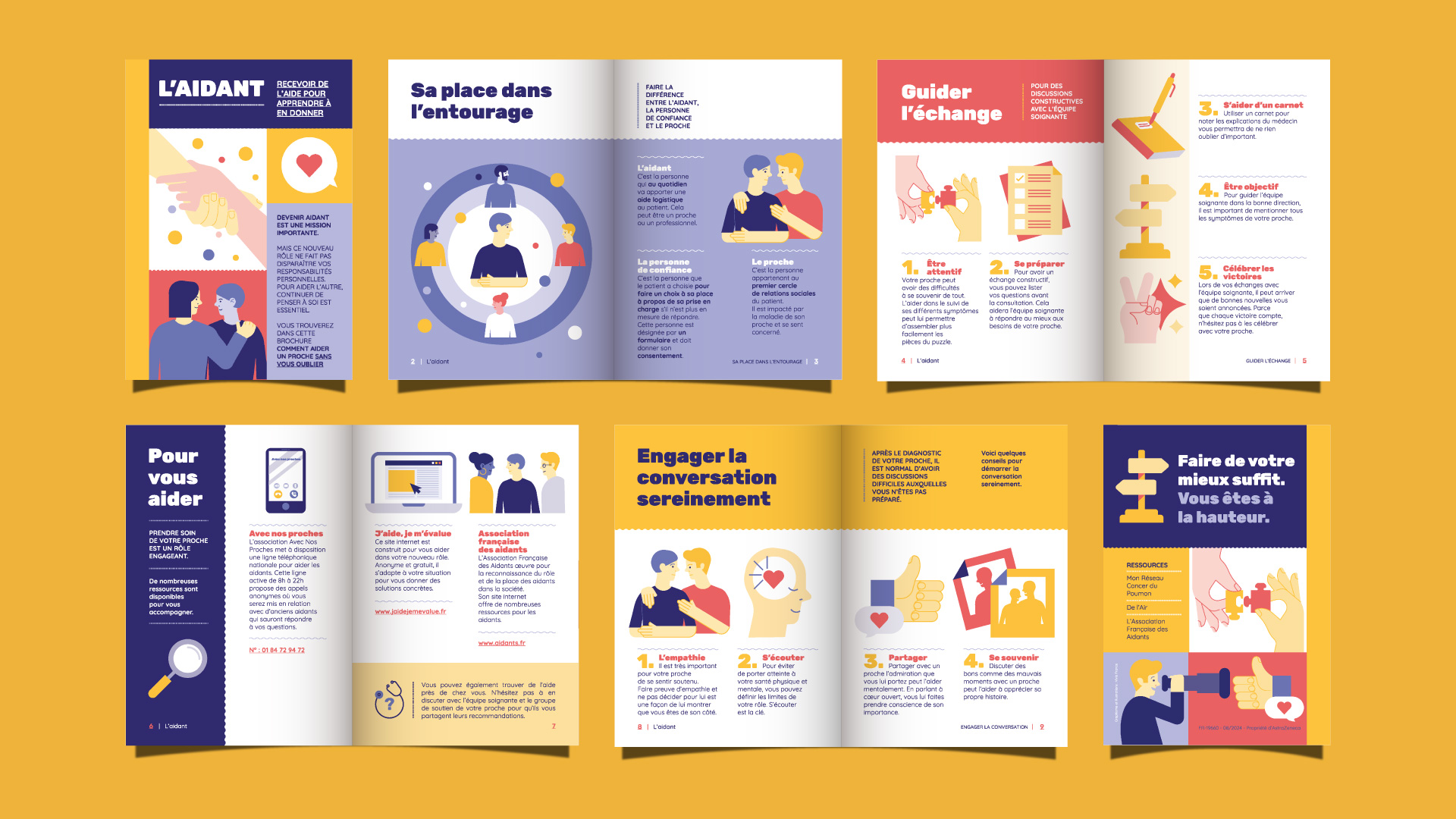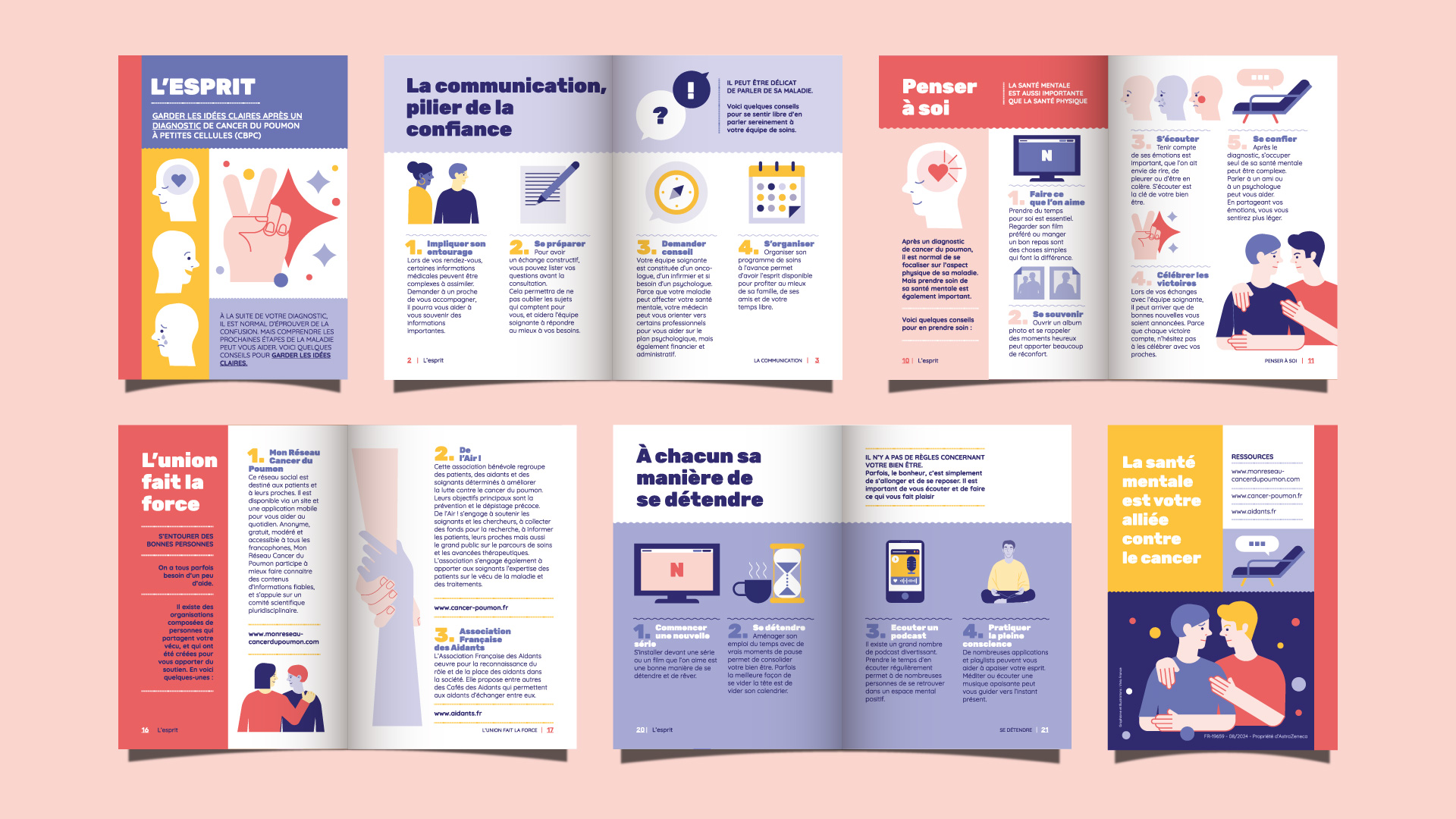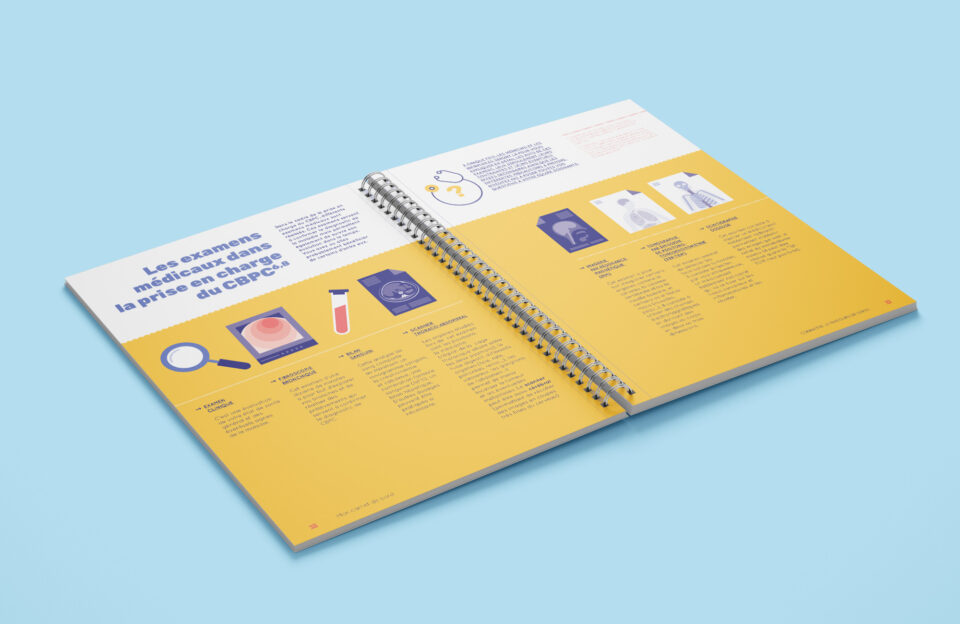Hope: A patient-centered toolkit
for small-cell lung cancer care
artistic direction – illustration – information design – UX
Hope: A patient-centered toolkit
for small-cell lung cancer care
Date
– 2022 / 2024
Client
– AstraZeneca France
Role
– artistic direction
– illustration
– information design
– UX
– Service design
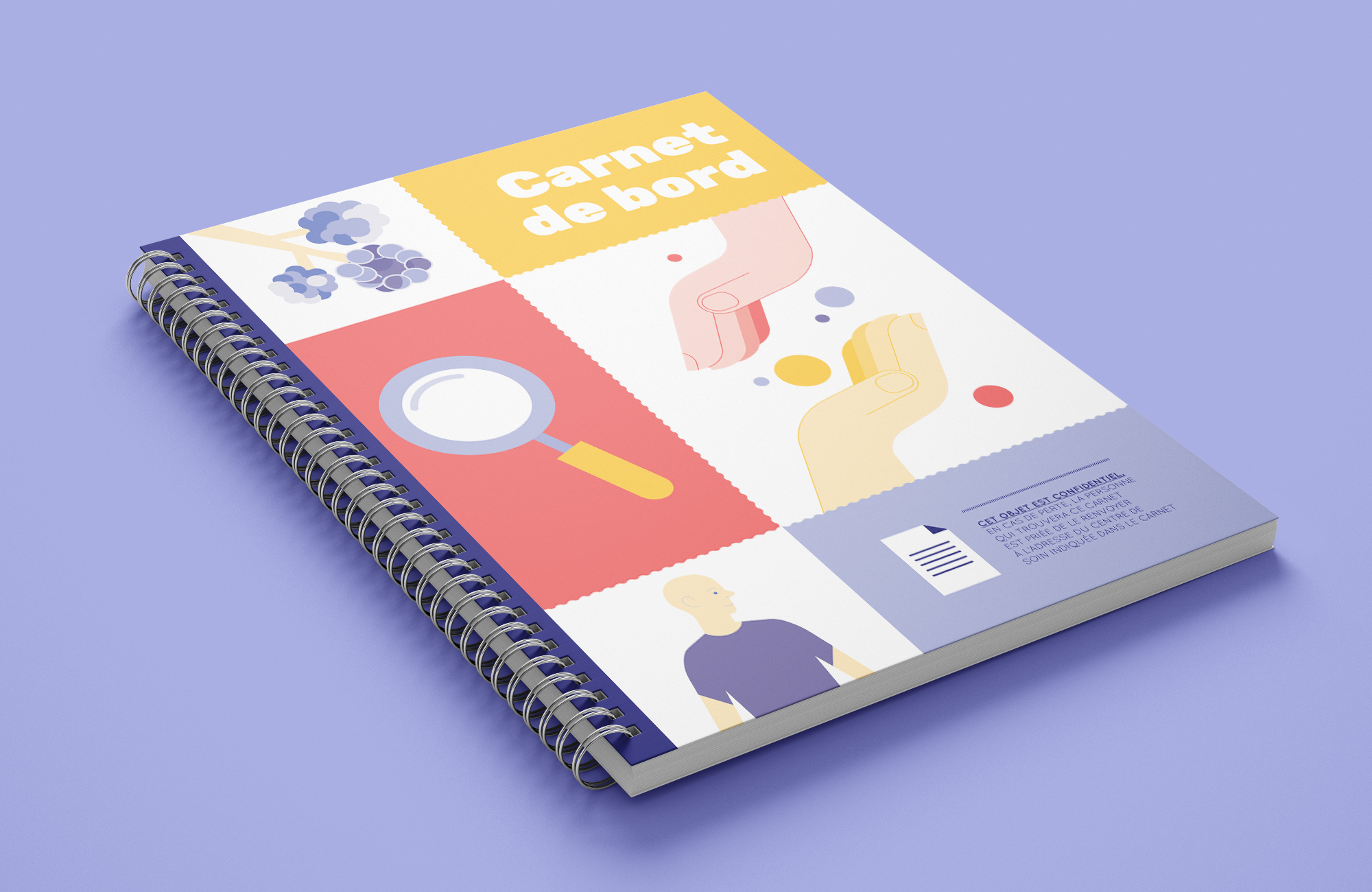
Context & Challenges
Small-Cell Lung Cancer (SCLC) accounts for 15–20% of lung cancer cases and is characterized by its aggressiveness and poor prognosis, with a life expectancy of 12–18 months post-diagnosis. Its management is a therapeutic emergency. However, due to the urgency and complexity, patients often lack access to clear, digestible information, especially at diagnosis, when they are in a state of emotional shock.
The discrepancy between the clinical timeline and the patient’s emotional processing time created a central tension: « The doctor’s time is not the patient’s time »
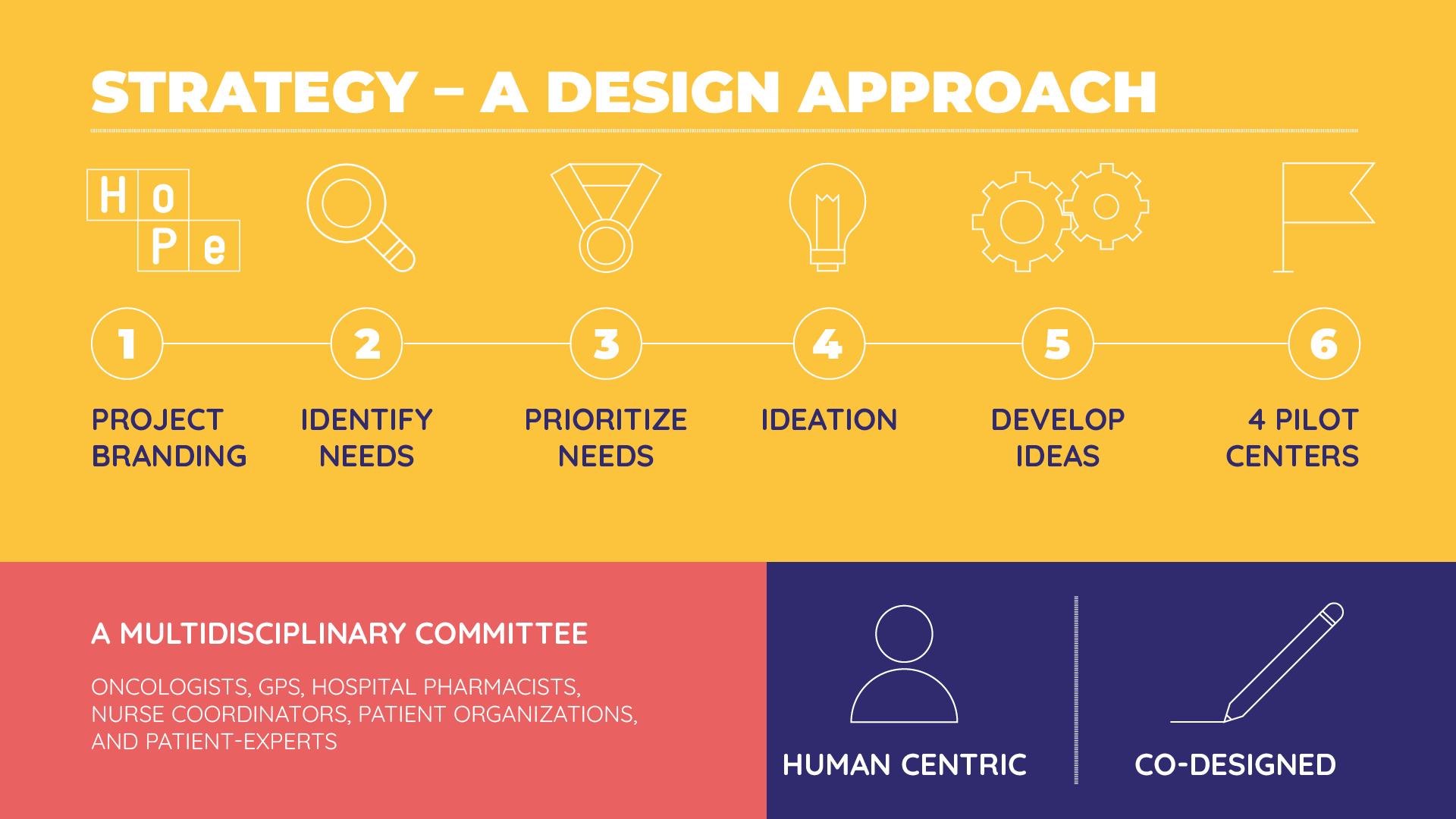
Research insight
Through interviews with healthcare professionals and patients, several key issues emerged:
– Emotional Overload at Diagnosis: Immediate treatment (within 48–72 hours) leaves patients overwhelmed and uninformed.
– Fragmented Communication: Short, result-focused consultations make it hard to discuss everyday challenges or emotional needs.
– Dual Ecosystems: Patients oscillate between the hyper-medicalized hospital and their under-medicalized home life, often feeling unsupported.
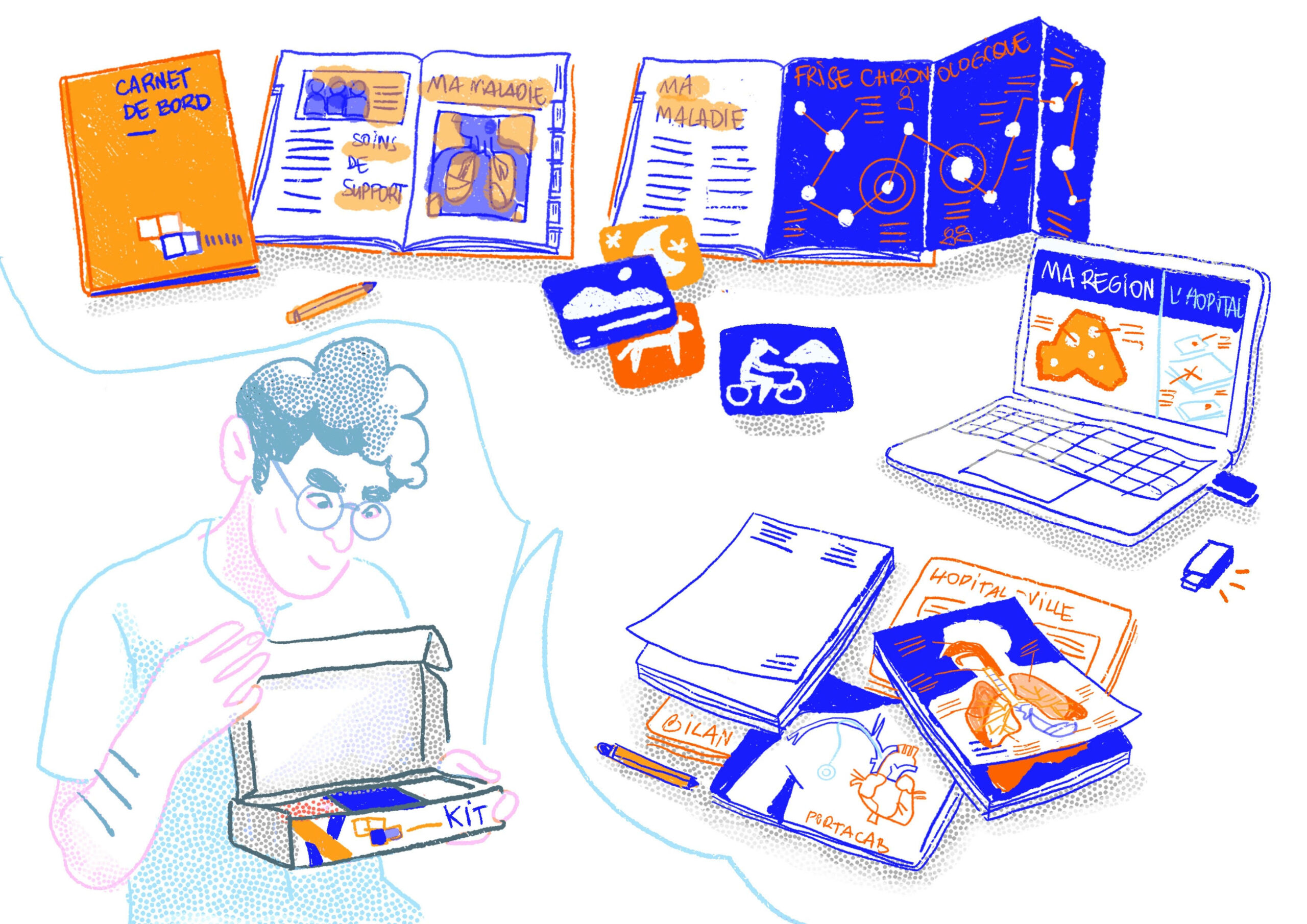
Project goals
Together with AstraZeneca and a multidisciplinary board (oncologists, GPs, hospital pharmacists, nurse coordinators, patient organizations, and patient-experts), we co-designed a toolkit to support patients and healthcare providers throughout the SCLC care journey. The goals were:
– Personalize medical information to match patients’ emotional and practical needs.
– Support daily life with concrete, non-medical advice (diet, sleep, routines).
– Facilitate care coordination with visual, portable, and accessible tools.
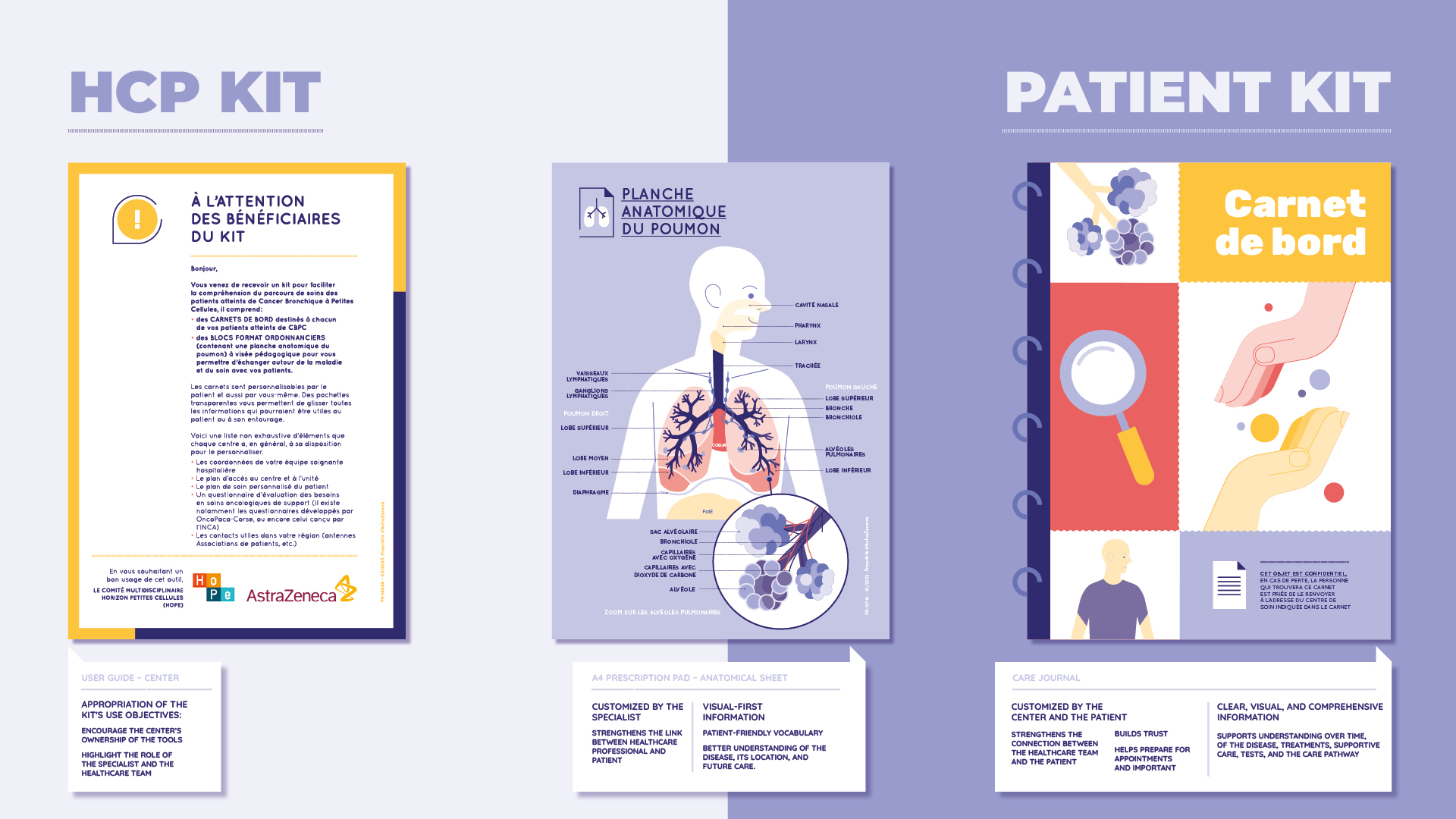
Co-designed Tools
We created a three-part toolkit used by more than 2,000 patients across several pilot centers.
Health Professional Guide
A practical manual (A4) that helps professionals integrate the kit into their practice. It promotes personalization and reinforces their central role in the care journey.
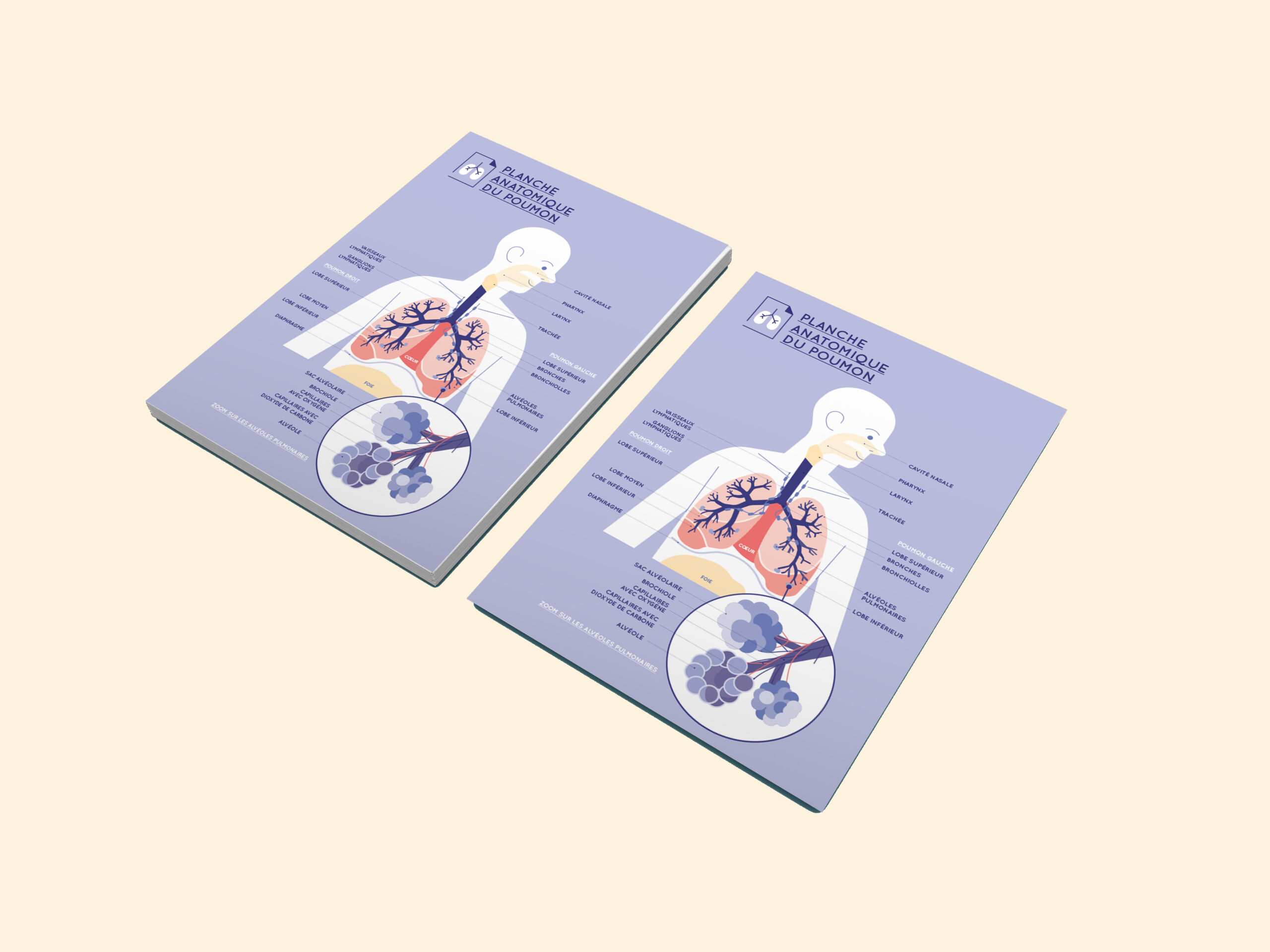
Anatomical Lung Chart (Prescribable Pad)
A 25-page visual tool used during consultations to explain diagnosis, treatment plans, and tumor location in an engaging, understandable way. Rated 4/4 stars by healthcare professionals.
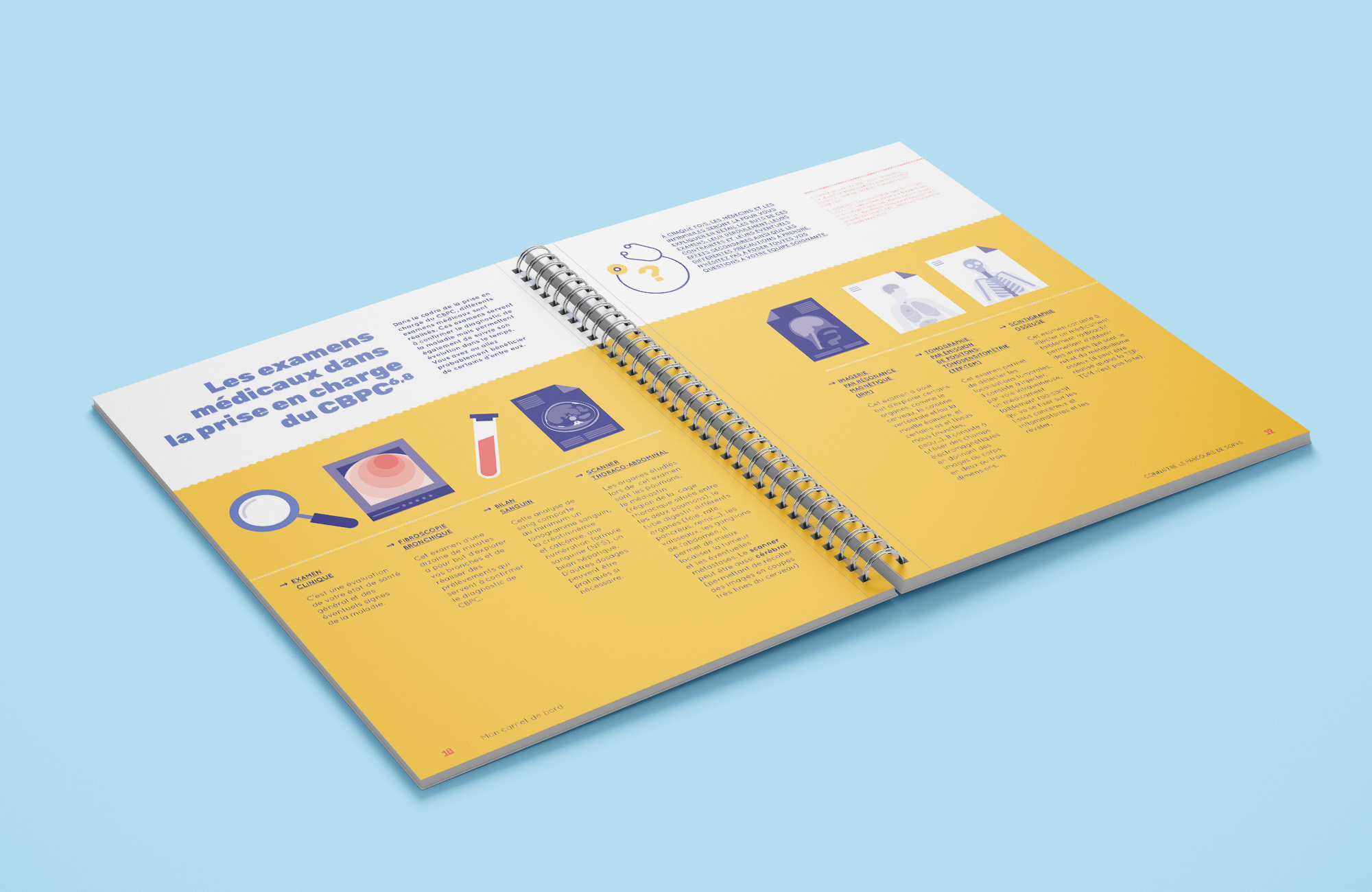
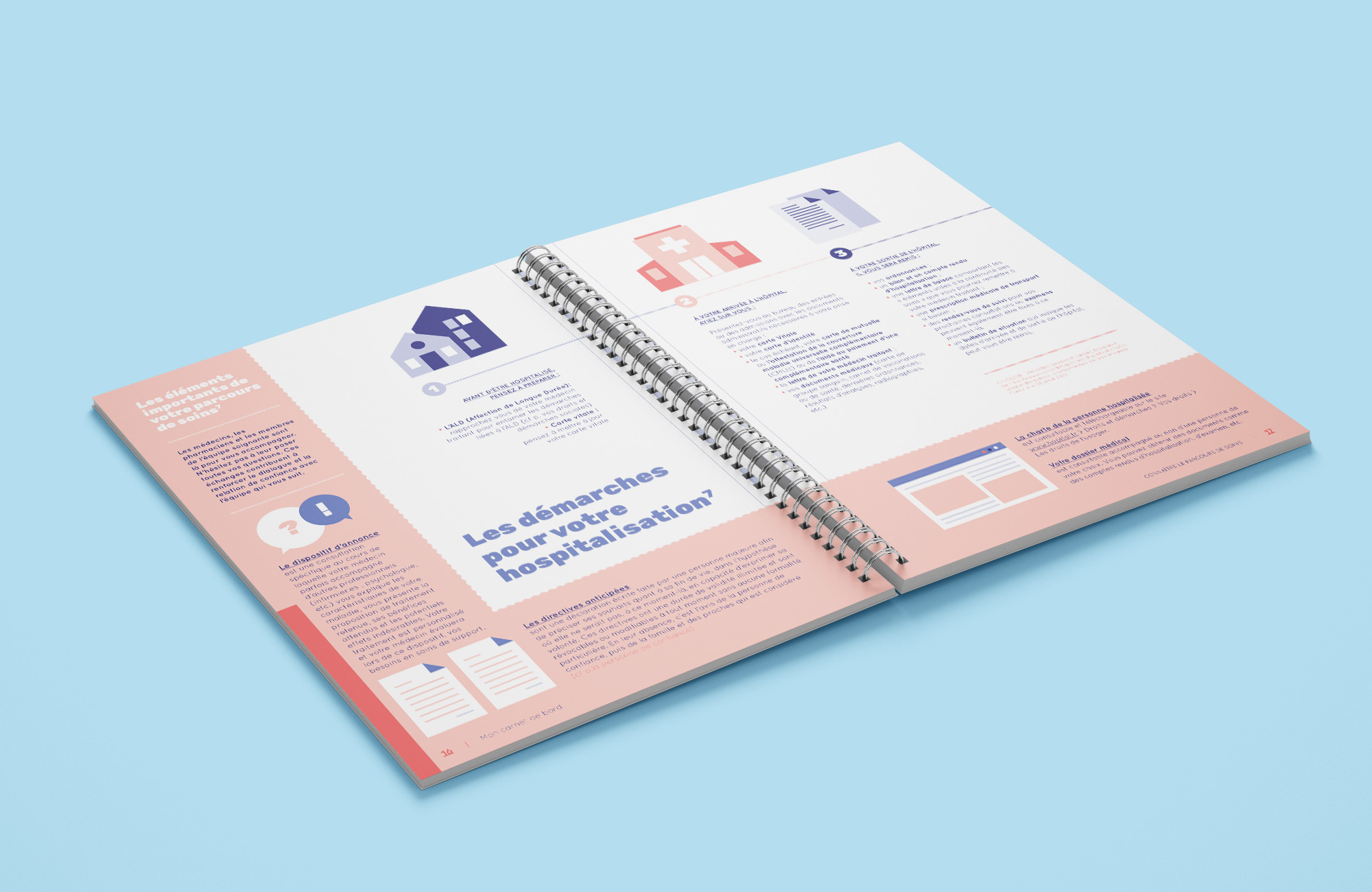
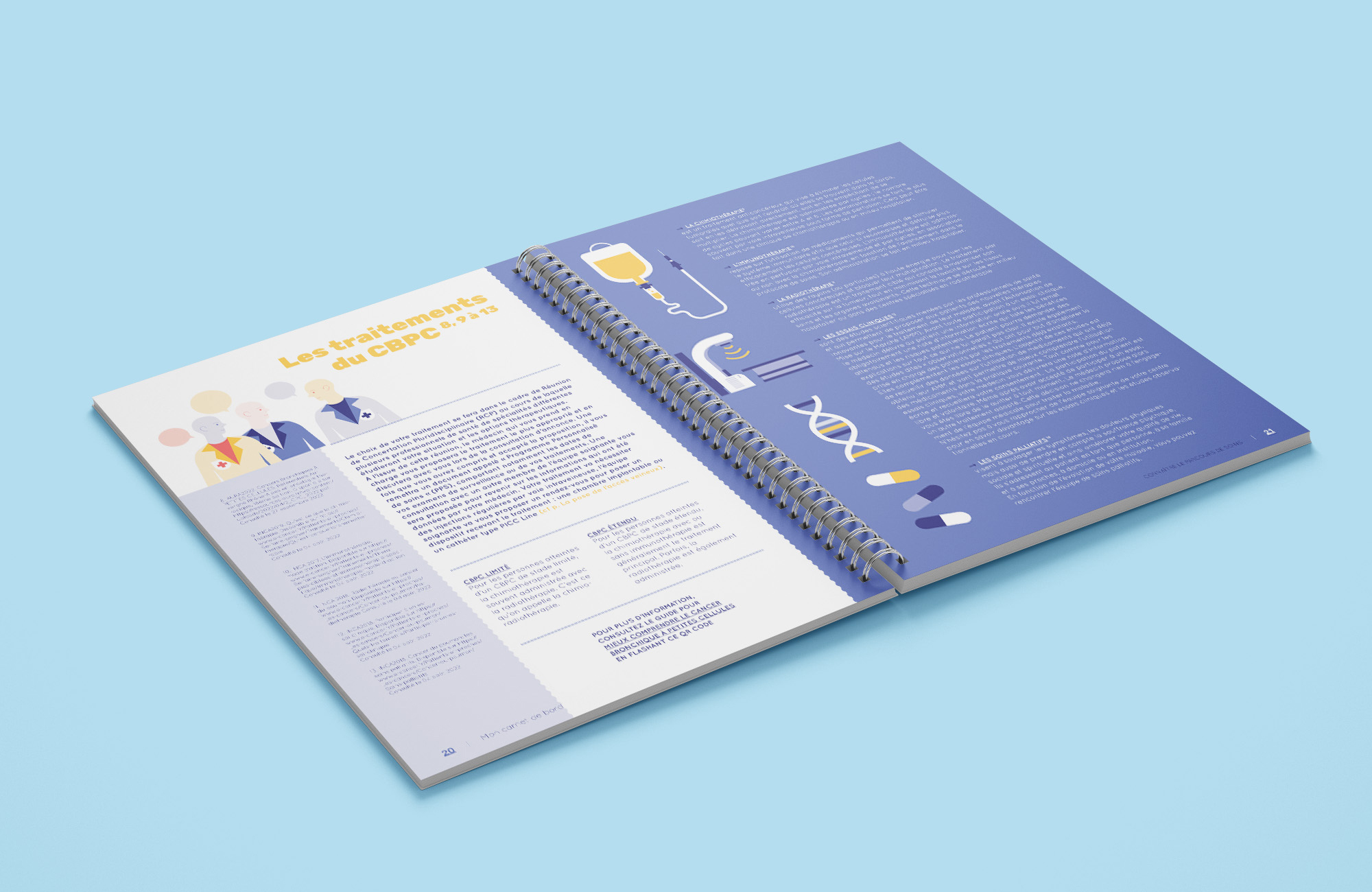
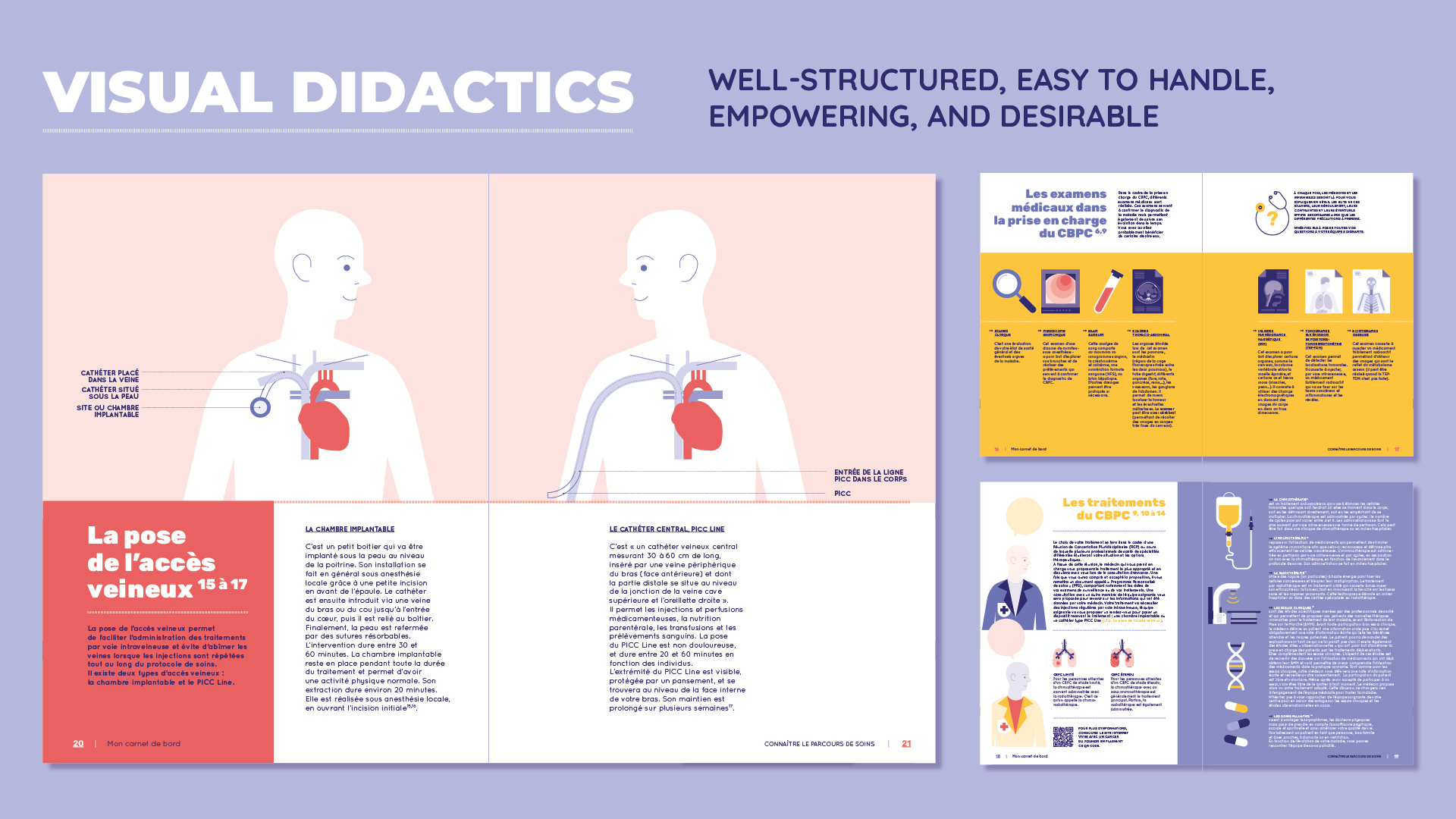
Patient logbook
The core of the kit, a customizable, illustrative care diary designed to:
– Track appointments and questions
– Store essential documents (tests, care plans)
– Visually explain treatments and procedures
– Encourage self-expression and care preparation
The logbook was designed with clear editorial structure, warm typography, rounded visual elements, and a comforting yet medically accurate color palette, to balance empathy and clarity. Patient satisfaction: 8.52/10 | HCP satisfaction: 9/10
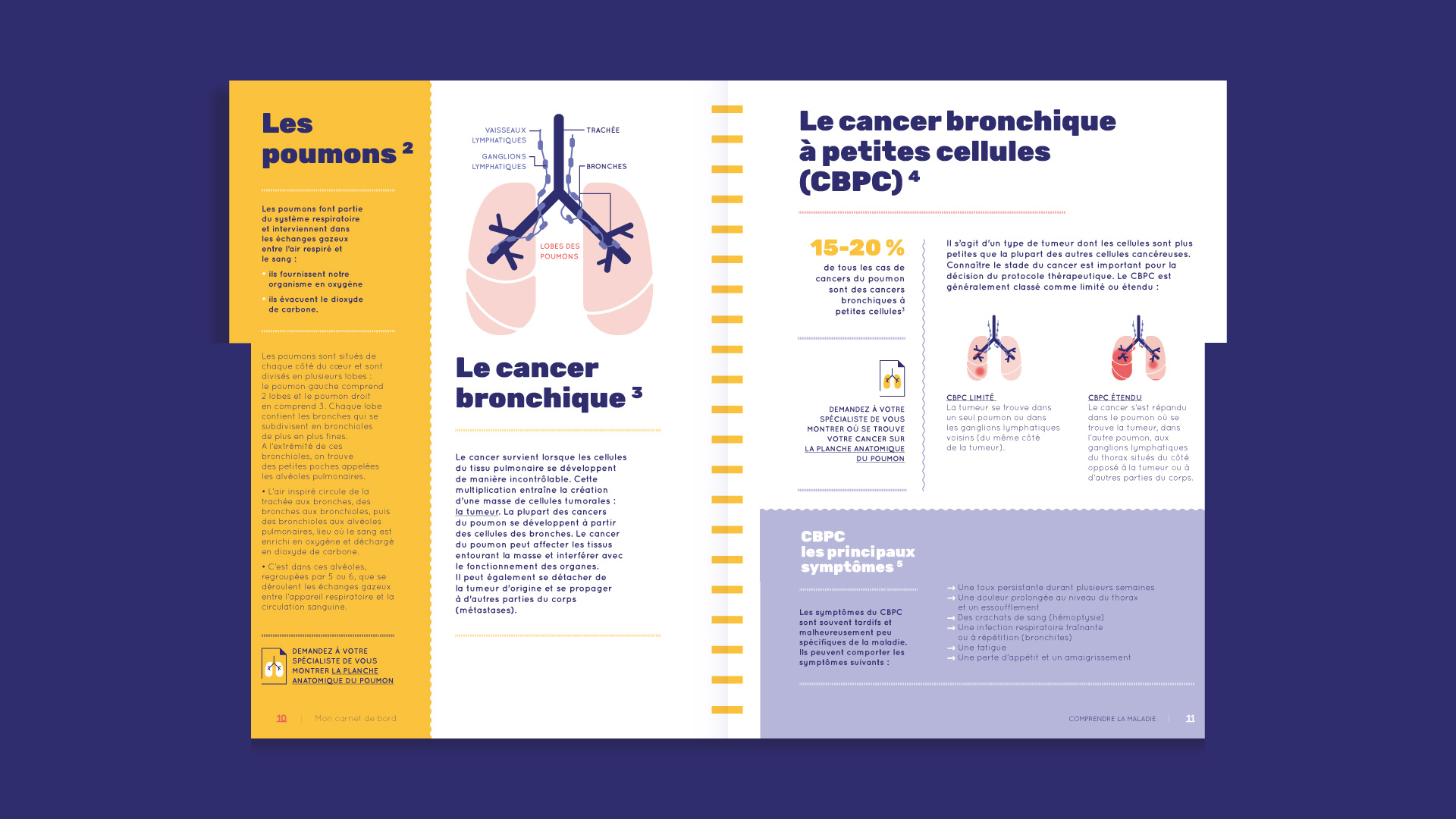
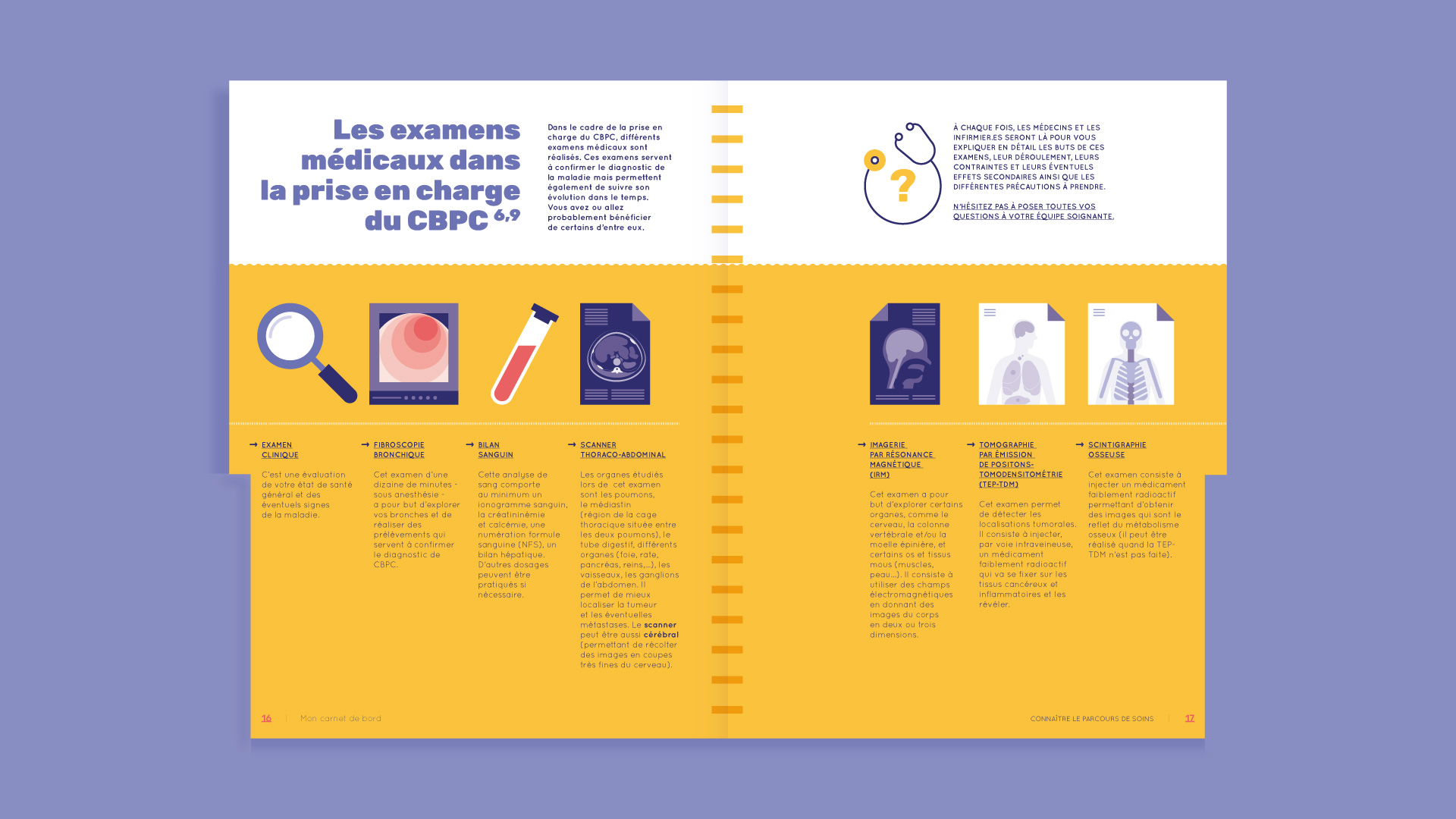
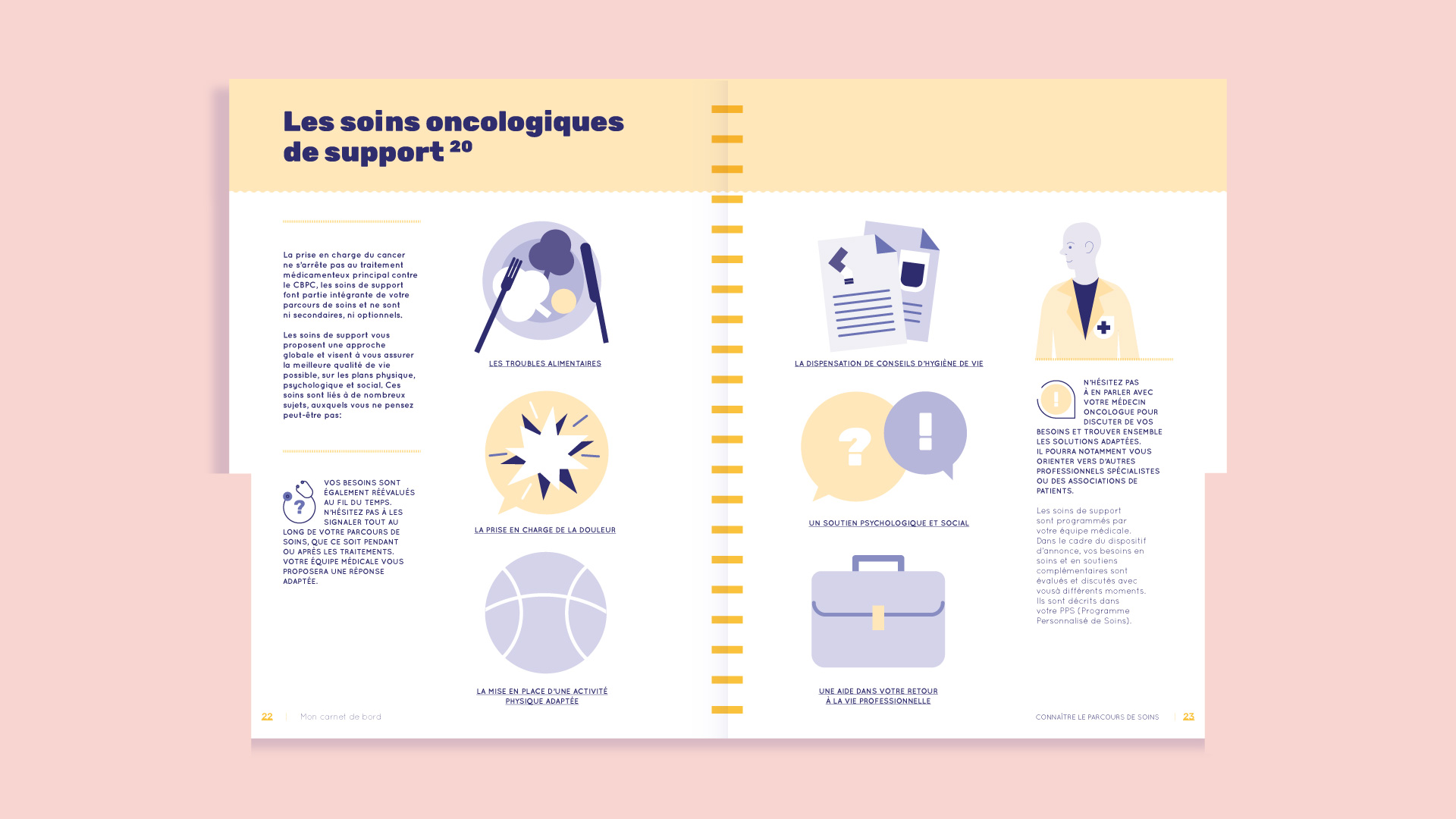
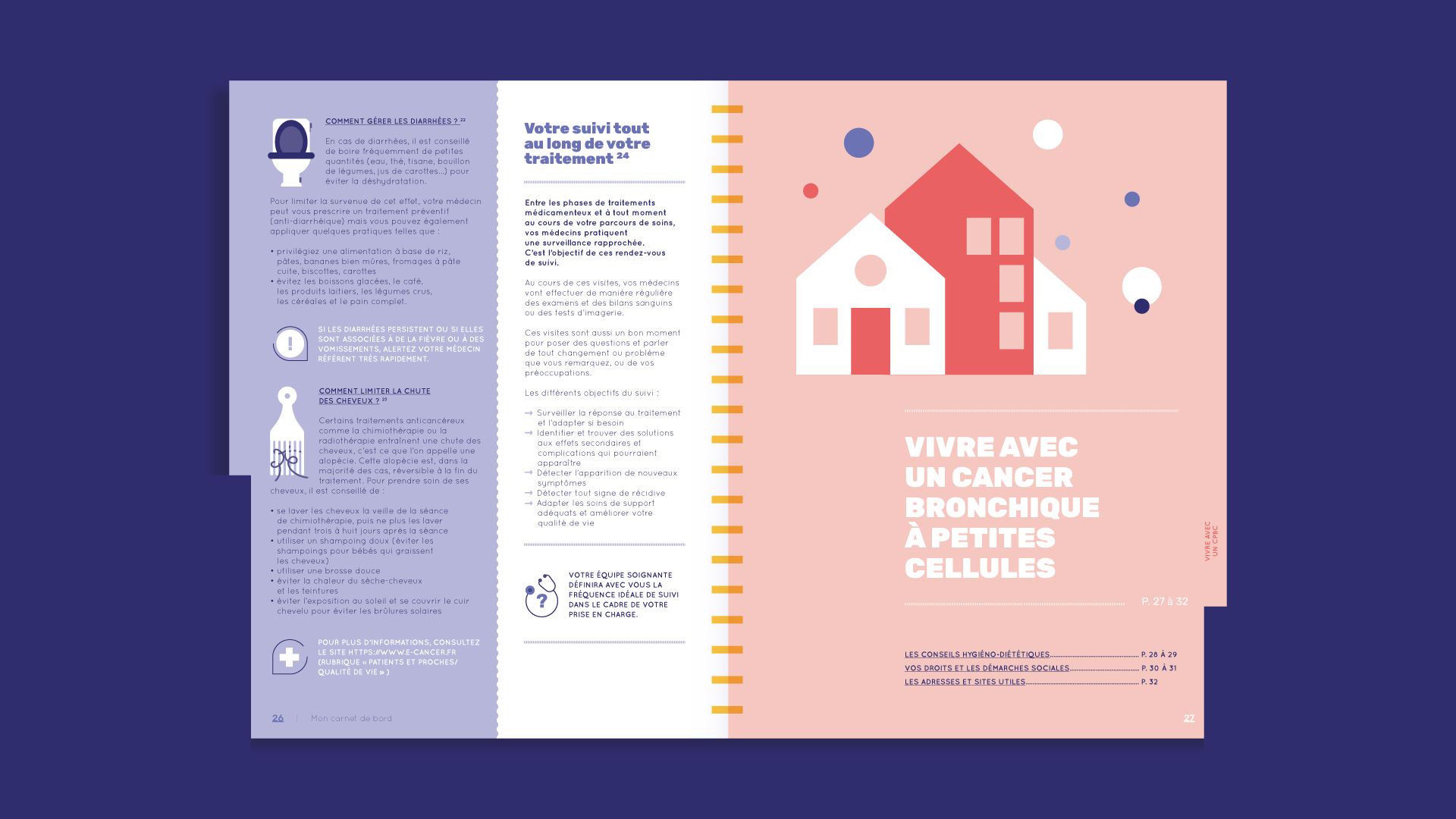
Design values
– Inform vs. Train: Prioritize actionable, real-life info over theoretical overload at diagnosis.
– Care Beyond Cure: Address physical, psychological, and social impacts of SCLC.
– Humanize the Experience: Through design, empower patients to better understand and manage their disease, without being reduced to it.
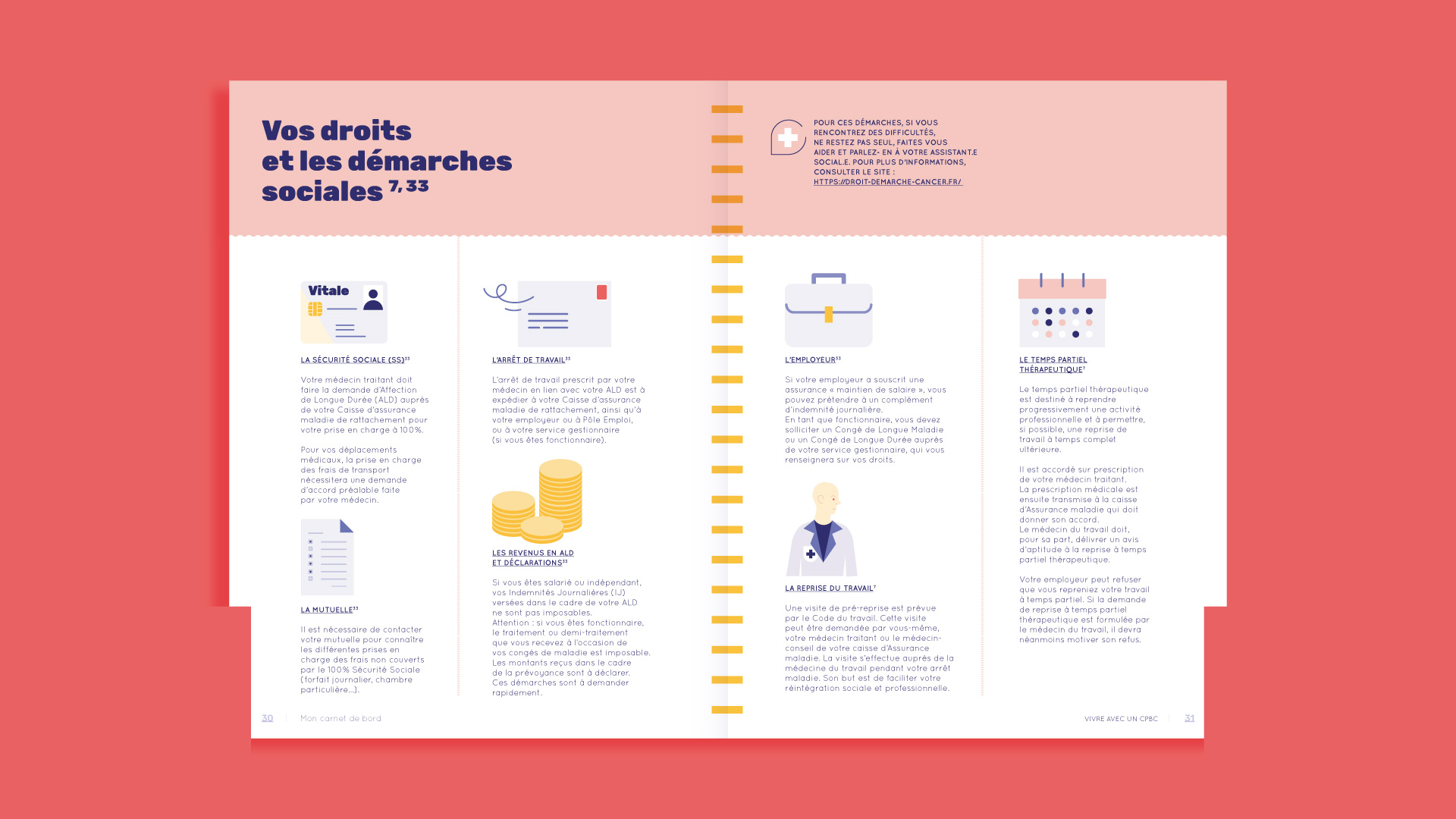
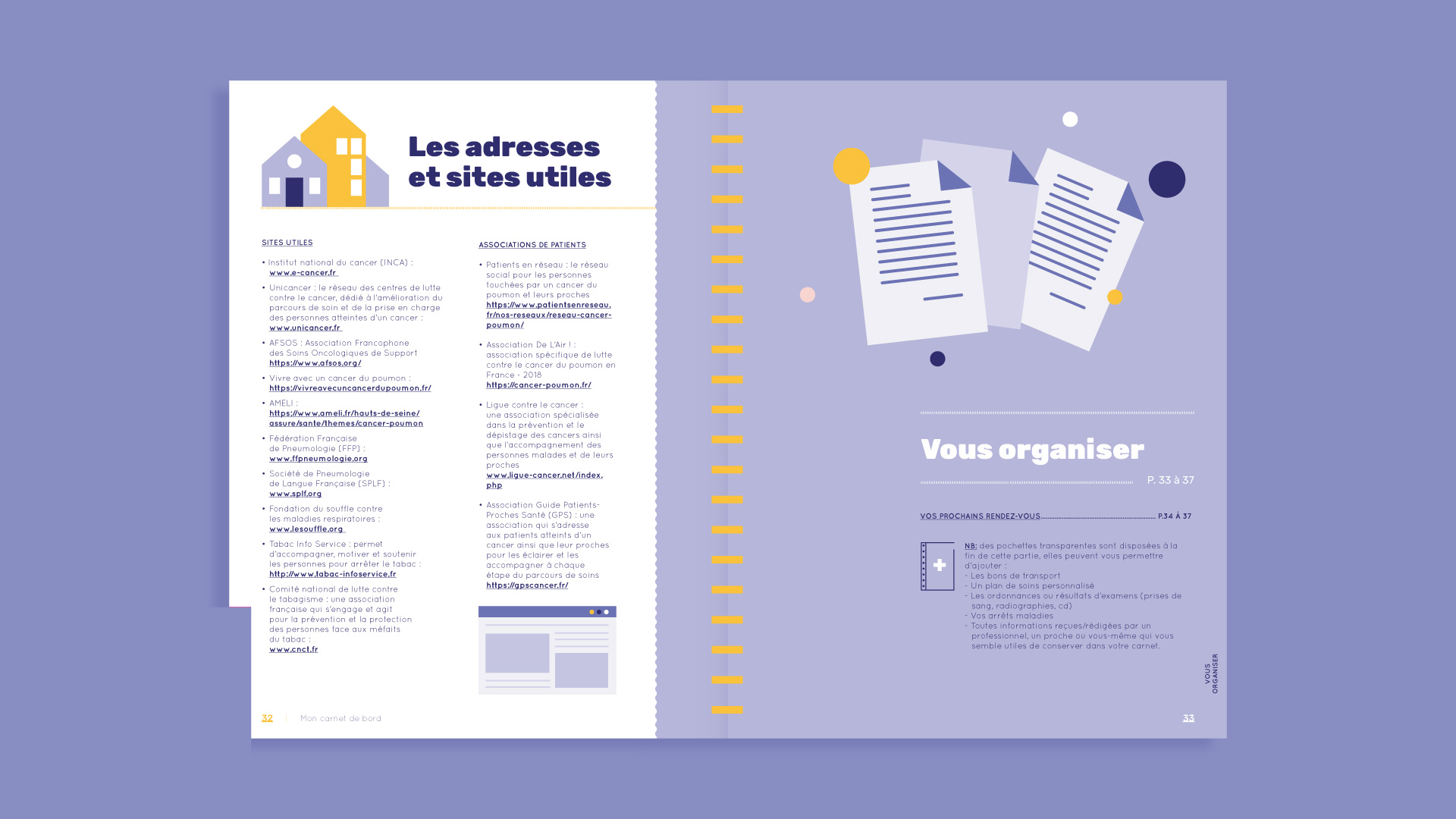
Methodology & Impact
Human-Centered Design: All stages included expert interviews, insight mapping, co-creation workshops, and iterative prototyping.
Pilot Programs: The kit was tested in 4 centers before national rollout.
Results: 100% of patients said the toolkit strengthened their relationship with their care team.
This project exemplifies how thoughtful, collaborative design can transform the patient experience, even in the face of severe diagnoses.
